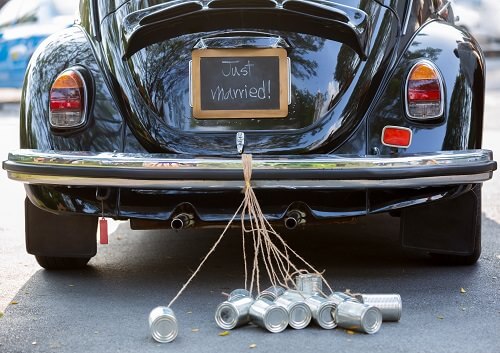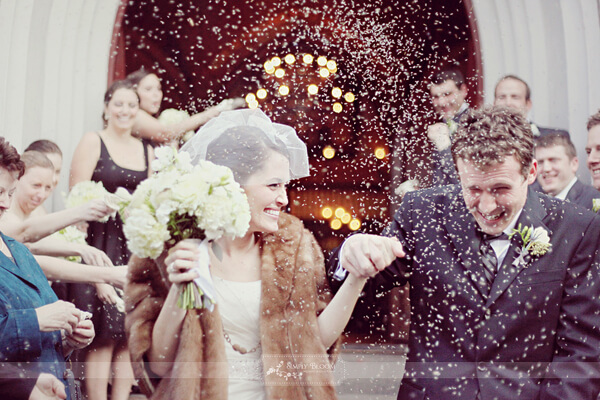Did you know a bride stands on her father’s left walking down the aisle because his right arm would be free to draw his sword to protect or defend the bride if necessary? Occasionally, we forget why we do certain things and get in the habit of saying, “It’s always been done this way” or “It’s just what everyone does.” Well we are here to help you learn the origins of certain wedding traditions and what they symbolize. Time for some fun facts!
1). The term “honeymoon” dates back to the 5th century when newlyweds drank mead, a honey-based alcoholic drink, each day after their wedding day for 30 days, or roughly one “moon” cycle.
2). After the ceremony, a bride switches the placement of her engagement ring and wedding ring so the wedding ring is closest to her heart.
3). Showering a couple with rice as they leave the church is meant to bless the couple with fertility (so, don’t have your family and friends throw rice at you, if you don’t want kids)!
4). In a Hindu ceremony, when the couple are bound together with a sash and led around the altar seven times, it signifies their vows to walk through life together. Some other cultures do variations of this as well, hence the term “tying the knot.”
5). In the receiving line, if you touch a bride on her wedding day, supposedly some of the brides happiness and luck will rub off on you.
6). The month of June was named after Juno, the Roman goddess of marriage and childbirth. The reason June weddings are so popular (or maybe because of the weather, now).
6). In a Jewish wedding, parents stand at the edge of the chuppah symbolizing them as the walls supporting the new couple’s home.
7). Veils were originally worn to fight off evil spirits and demons. As time went on, veils are now used as a symbol of modesty and purity.
8). Bridesmaids dress relatively the same to confuse and trick the eye of evil spirits from getting to the bride.
9). A red carpet outside of the church and aisle runner are to keep the bride’s feet from touching the ground and to keep her away from evil spirits (apparently there were a lot of evil spirits back in the day).
10). Couples cut their wedding cakes together and feed each other in symbolism of them sharing their first food together. Yum, cake!
11). Tin cans and noisemakers are tied on the getaway car to scare off evil spirits because newlyweds were considered vulnerable while they traveled. Old shoes symbolized the transfer of control over the bride from her father to her husband.
12). The concept of a bridal shower started with a Dutch bride when her family disapproved of the couple’s proposed marriage and her friends threw her a party to “shower” her with gifts to set up their new house.
13). In the Old English rhyme, “Something old, something new, something borrowed, something blue, a sixpence in your shoe,” something old symbolizes continuity; something new represents optimism of the future; something borrowed symbolizes borrowed happiness; something blue represents purity, love, and fidelity; and a sixpence if your shoe stands for good fortune and prosperity.
We hope we were able to teach you something today! Tell us which one you found interesting or any meanings behind some traditions you might have heard before!
Sources: joelgillie.com, usa.publiboda.com, modwedding.com, sterlingeventsaustin.com, womenfitnessmag.com




